We may earn income from links in this post. Please read this Disclosure for details.
This delicious purslane salad with pomegranate, fresh figs, toasted walnuts and baby quince celebrates the fresh flavours of the sunny Salento region of southern Puglia, Italy.
Featuring an abundance of foraged wild greens, the refreshing mix of textures, peppery sweetness and brilliant colours makes it a beautiful and nutritious summer salad!
What Exactly is Purslane?
You never know what you’ll discover in southern Puglia, Italy! On a recent trip to the Capo di Leuca region, I spent a morning foraging at the Celacanto Centre for Education and Citizen Activation in Marina Serra.
There, I learned from director Phillipo Messina that I’d been stomping on delicious edible greens for years without even realizing it.
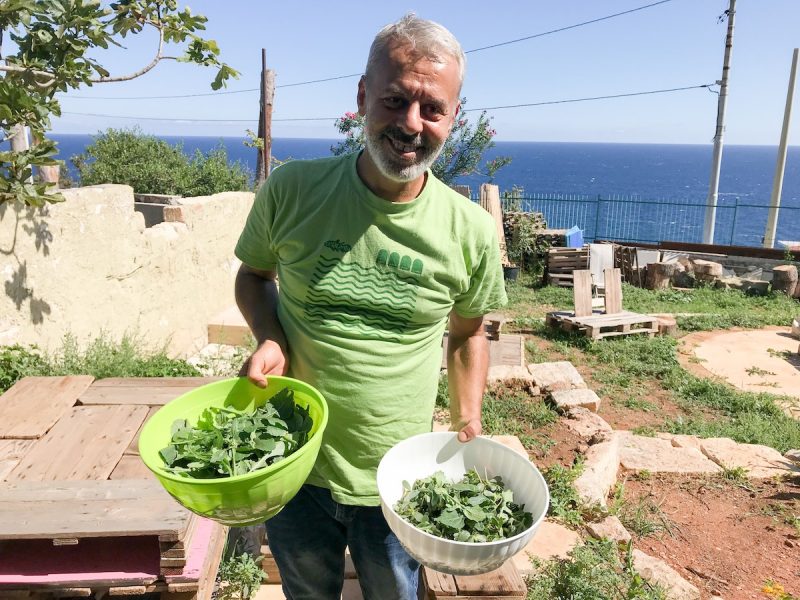
Considered a weed by most North Americans, purslane is actually an edible succulent plant that’s a member of the portulaca family.
Purslane is known by many different names around the world including:
- verdolagas in Mexico, Guatemala and throughout Latin America,
- brucacchia in Salento, Italy,
- porcacchia in Rome,
- ‘a purciddana in Sicily,
- Porcellana in other regions of Italy,
- coupie in Dominica,
- semizotu in Turkey (a popular Turkish dish features purslane in yogurt),
- sea parsley in Aruba where it’s one of many yerbe di lama meaning “grass of the ocean”
- bakleh in Arabic,
- and purslane in many countries,
So if you happen across a plant known by one of the above names, you’re in luck! It’s a delicious edible green.
Where to Forage for Purslane
Fast-growing portulaca oleracea loves direct sunlight and thrives in poor soil.
That means you can often find the low-lying plant growing wild in between the cracks of sidewalks, creeping over rocks and spreading its shallow roots in dry locations.
Once you locate it, you can remove the purslane leaves individually or by thinning out the plant and removing a section of the branch.
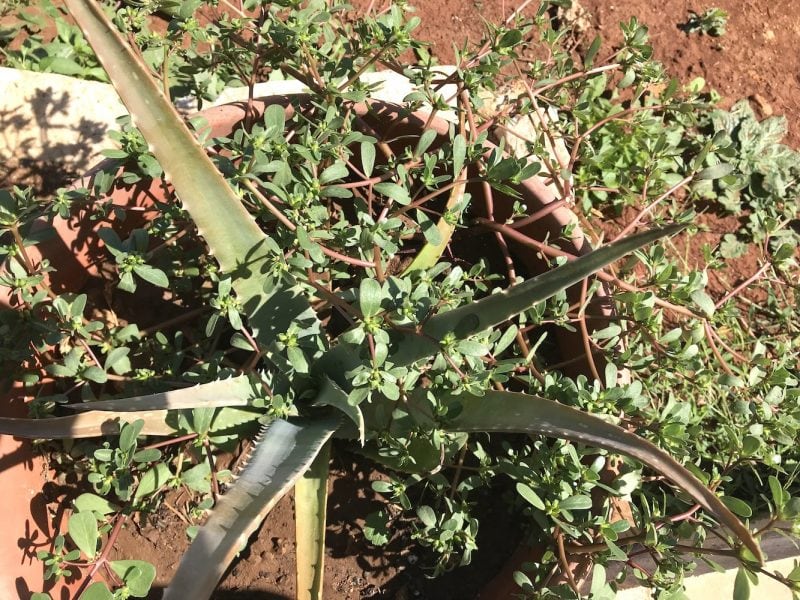
When foraging for purslane–or any other wild plant–you need to be sure that the greens you’re picking are not contaminated by pesticides, fertilizers or industrial contaminants.
It’s also important to follow sustainable practices when harvesting wild plants and herbs. At Celacanto I learned that one of the most important responsible foraging techniques to leave the roots intact.
Try to pick only the tips of the plant and leave the majority of the visible above-ground portion of the plant untouched.
Cultivated Purslane
Although it’s very easy to forage for purslane it’s even easier to purchase it at a market. You can sometimes find fresh bunches of purslane in farmers markets in mid-summer.
Or, grow it yourself. This fast-growing annual can also be cultivated from seed.
So plant some in a pot on your patio or in your herb garden and enjoy it fresh any time.
One of the advantages of cultivating your own purslane is that commercial varieties such as Goldberg Golden Purslane from Johnny’s Seeds grow upright.
That makes it much easier to harvest. The leaves are also much larger.
Eating Purslane
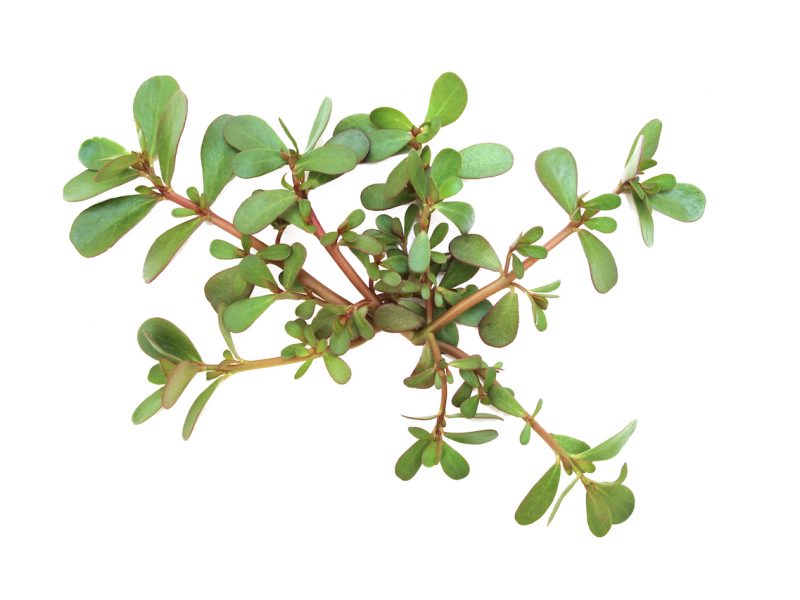
The leaves and stems of purslane are edible. Note, however that they are toxic to cats.
What does purslane taste like? It’s got a mild, citrusy flavour that works well in many dishes.
The purslane I’ve tried in Aruba, Mexico and Italy has a slightly salt taste as it absorbs a bit of sea air from the ocean.
Try it in a green smoothie at Mauchi Smoothies in Savaneta, Aruba.
Although you can eat purslane cooked in stews or soups, sauteed in a stir-fry or raw in green smoothies, one of the best ways to enjoy purslane is in a fresh salad.
That preserves all the wonderful crunch of the plant’s smooth, glossy leaves.
In terms of texture, purslane is a mucilaginous plant which means the inside of the plump leaves is slightly gelatinous almost like aloe. That provides a burst of flavour when you bite into it.
Nutritional Benefits of Purslane
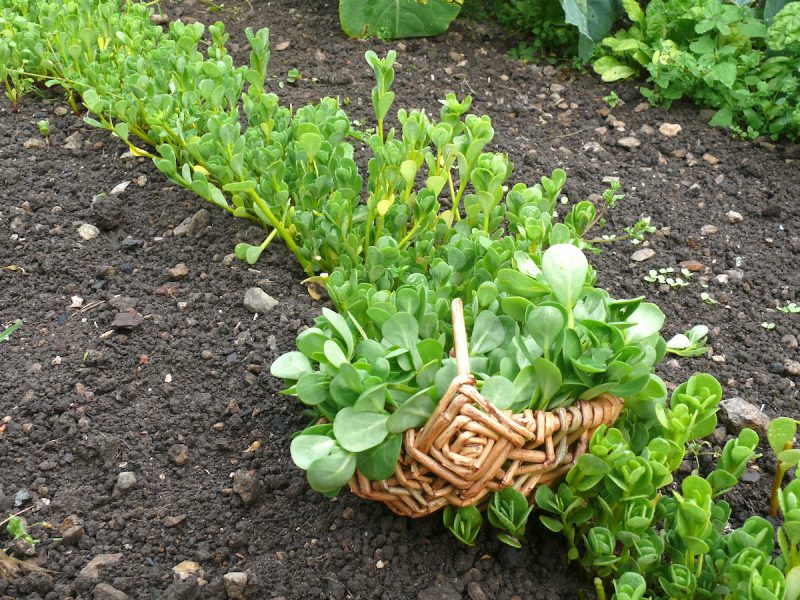
Considered a superfood, purslane is packed with vitamins and minerals including Vitamin A, Vitamin C and Vitamin E as well as heart-healthy Omega-3 fatty acids. 100 grams of purslane leaves contain around 350 mg of α-linolenic acid!
Another benefit is that it also has antibacterial, detoxifying and soothing properties. This makes purslane valuable for strengthening the immune system.
Purslane is even sold as a health food supplement in powdered form. In traditional Chinese medicine it’s known as Ma Chi Xian and is valued for its cooling and detoxification effects.
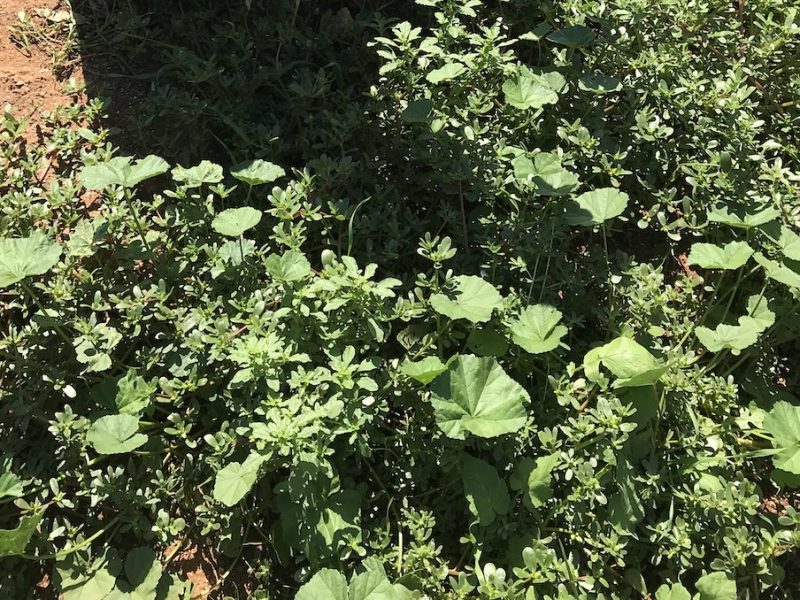
How to Store Purslane
- Purslane will keep well in the refrigerator for up to four days.
- Submerge the stems of purslane in a glass of water when storing and it will last even longer.
If you have a bounty of purslane, why not try this delicious recipe for Lebanese Bakleh Pockets featuring cooked purslane tucked inside flaky puff pastry!
How to Make Purslane Salad with Pomegranate, Fig, Walnut and Quince
This recipe for Wild Purslane Salad with Pomegranate, Fig, Walnut and Quince comes from Celacanto in the Salento Region of Italy.
Once you’ve harvested (or purchased) your fresh purslane you’re ready to begin assembling your salad.
1. Take four cups of purslane stems and leaves (without roots) and wash them throughly to remove any dust, grit or dirt.
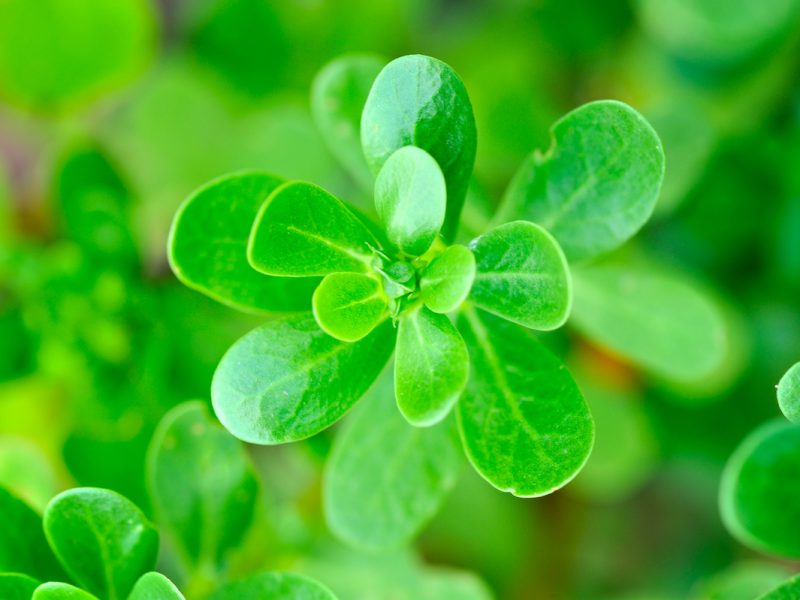
2. Remove the seeds from one pomegranate separating the bitter, white membrane and rind that surrounds the arils (seeds). Try to keep the arils as intact as possible.
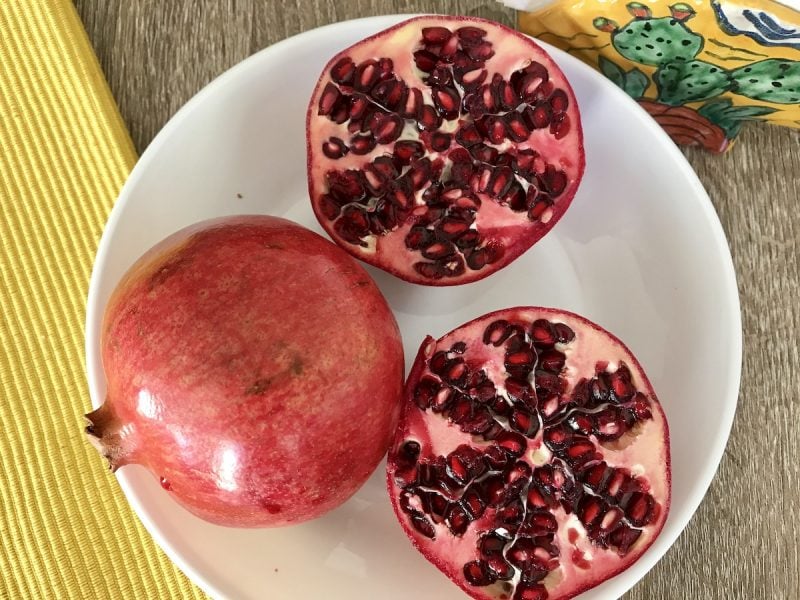
3. Toast 1/2 cup of shelled walnuts in a dry skillet over medium-high heat until lightly browned. This should take between 3 to 5 minutes. Watch carefully so they don’t burn.
4. Cut five fresh figs in half.
5. Chop one fresh quince into small pieces. If you can’t find quince, then a fresh, ripe pear is a good substitute.
6. Whisk together five tablespoons of extra-virgin olive oil, one tablespoon of white balsamic vinegar, one tablespoon of freshly-squeezed lemon juice and 1/4 teaspoon salt in a small bowl.
The key to making a great salad is using a top quality olive oil. At Celacanto they used extra virgin organic olive oil from the Olio Merico company in Miggiano, Salento.
7. Toss the purslane and remaining ingredients together with the dressing in a large salad bowl. Season with salt and pepper to taste.
Serve and enjoy!
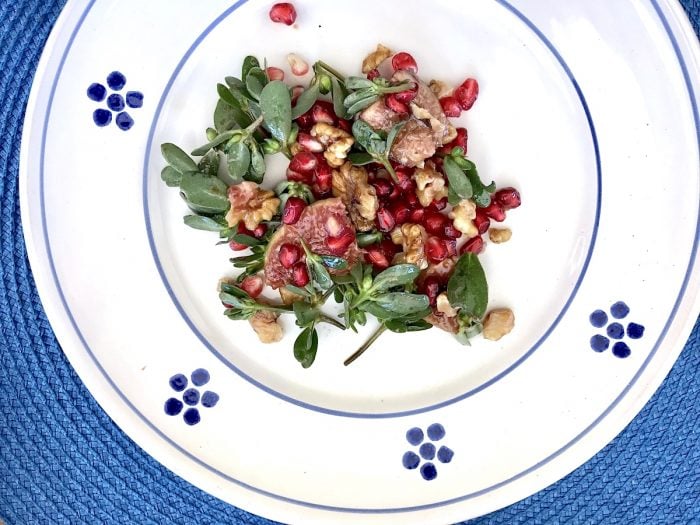
What to Serve with Purslane Salad
- Purè di fave e Cicorie – Fava Bean Puree with Chicory
- Grilled Beef with Beer Marinade
- Light Panna Cotta with Mango
Suggested Wine Pairing: This summery salad pairs well with the delicate and fruity Caminante Negroamaro di Terra D’Otranto Rosé 2019. This vivid pink rosé is made from grapes harvested at vineyards near Ruffano, northwest of Marina Serra.
Recipe
Purslane Salad with Pomegranate, Fig, Walnut and Quince
Equipment
- whisk
- large glass salad bowl
- small knife
Ingredients
- 4 cups purslane fresh
- 1 pomegranate
- 5 figs fresh
- 1/2 cup walnuts shelled
- 1 quince
Salad Dressing
- 5 tablespoon olive oil extra virgin
- 1 tbsp white balsamic vinegar
- 1 tbsp lemon juice freshly squeezed
- 1/8 tsp salt
Instructions
- Take four cups of purslane stems and leaves (without roots) and wash them throughly to remove any dust, grit and dirt.
- Remove the seeds from one pomegranate separating the bitter, white membrane and rind that surrounds the arils (seeds). Try to keep the arils as intact as possible.
- Toast 1/2 cup of walnuts in a dry skillet over medium-high heat until lightly browned. This should take between 3 to 5 minutes but watch carefully so they don't burn.
- Cut each of the fresh figs in half.
- Chop one fresh quince into small pieces. If you can't find quince, then ripe, fresh pear is a good substitute.
- Whisk together five tablespoons of extra-virgin olive oil, one tablespoon of white balsamic vinegar, one tablespoon of freshly-squeezed lemon juice and 1/4 teaspoon salt in a small bowl.
- Toss all the purslane and remaining ingredients together with the dressing in a large glass salad bowl.
- Season with salt and pepper to taste.
Notes
- The key to making a great salad is using a top quality olive oil. At Celacanto they used extra virgin organic olive oil from the Olio Merico company in Miggiano, Salento.
Nutrition
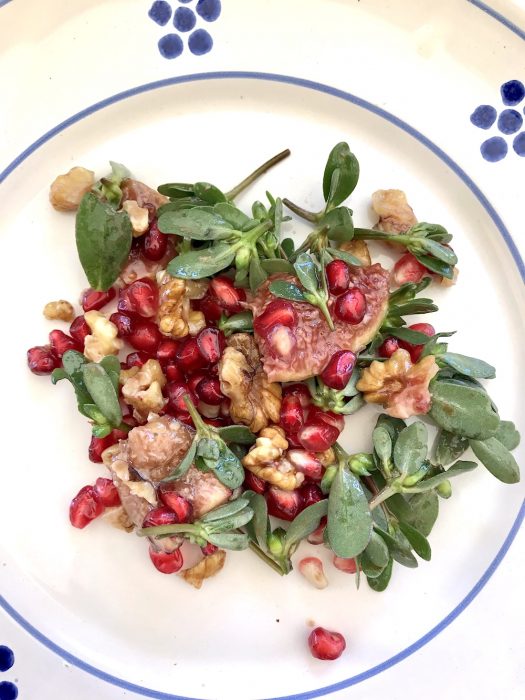
Other Recipes with Foraged Ingredients
Sample This Dish in Puglia, Italy

Puglia (Apulia) Official Tourism Site: Get maps, tourism information and more at the official Puglia Tourism Website. There is also a tourist information booth (with English-speaking staff) at Brindisi International Airport so be sure to make a stop upon arrival.
Getting There: From Rome take a short connecting flight to the modern Brindisi International Airport (BDS) via Alitalia. Or travel by train in five hours from Rome’s Termini Station. It’s a 1.5 hour drive from Brindisi Airport to the Capo di Leuca area.
Celacanto: This hub for innovation and sustainable living offers classes, workshops, art lessons, cooking classes and farming experiences. It’s a valuable resource for creative people interested in “active citizenship.”
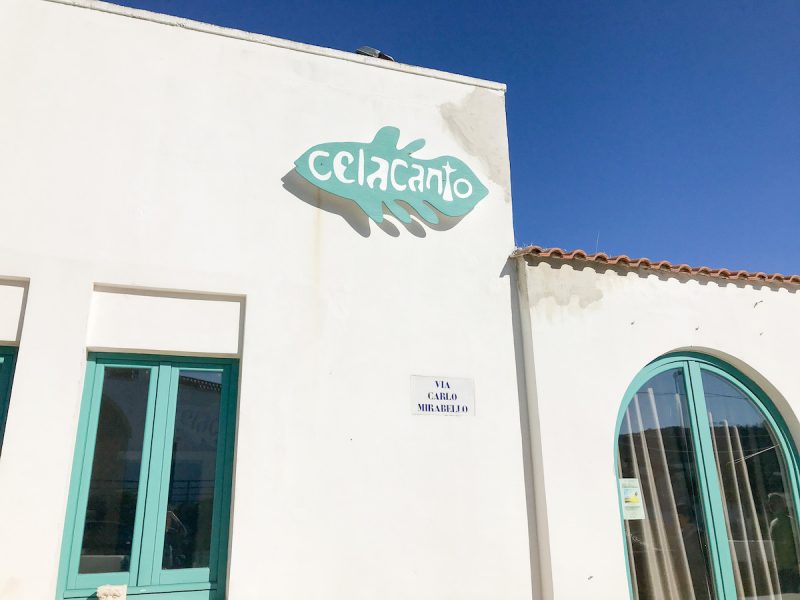
Stop by their Farmer’s Market, browse their shop or volunteer in exchange for free accommodation in the centre’s hostel.

Save to Pinterest!
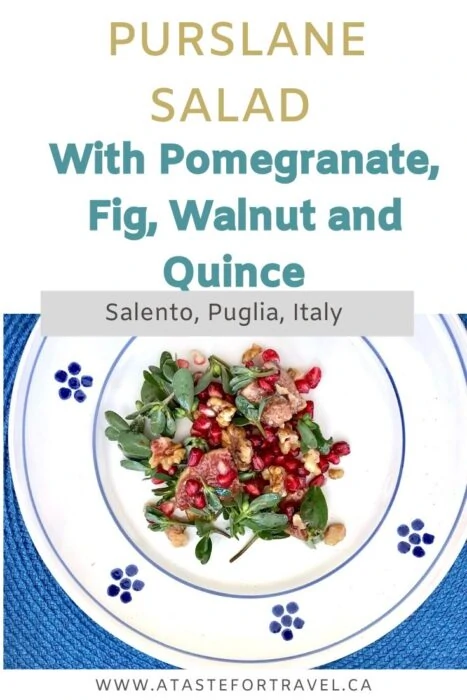
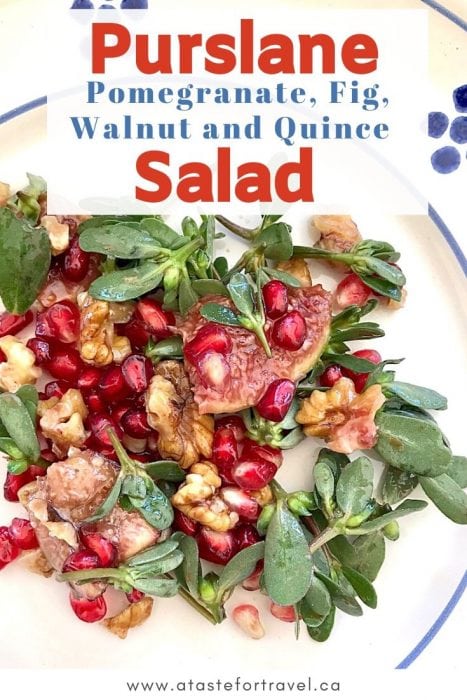
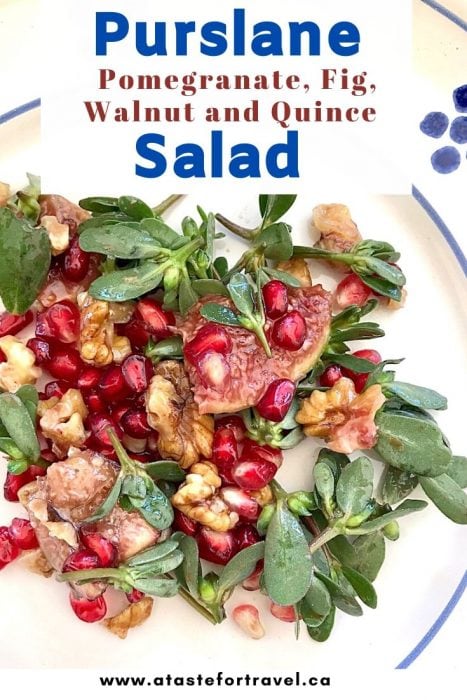
FAQs
Purslane has a mild, citrus flavour with slightly salty and peppery notes if foraged in the wild.
If harvested when young, purslane leaves and delicate stems are delicious eaten raw. It can also be eaten stewed or in soups.
It must be washed and cleaned to remove any grit or sand. The leaves can be eaten whole but the stems should be chopped. Then the purslane can be eaten raw, steamed or stewed.

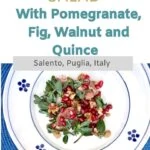
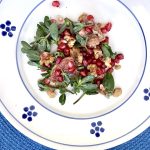
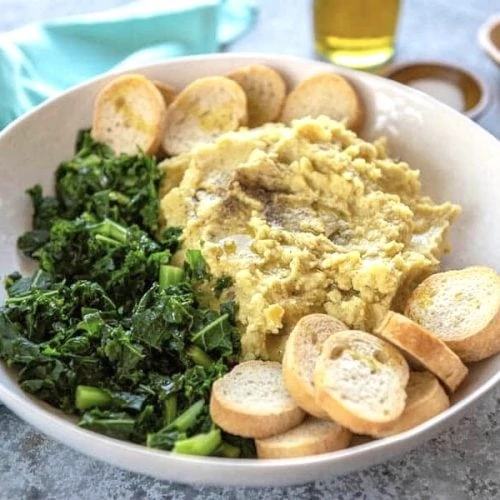
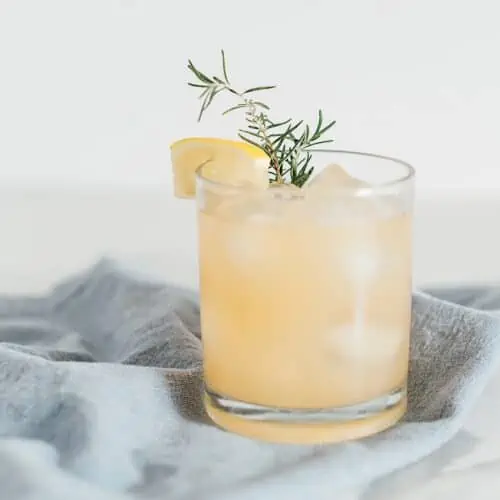
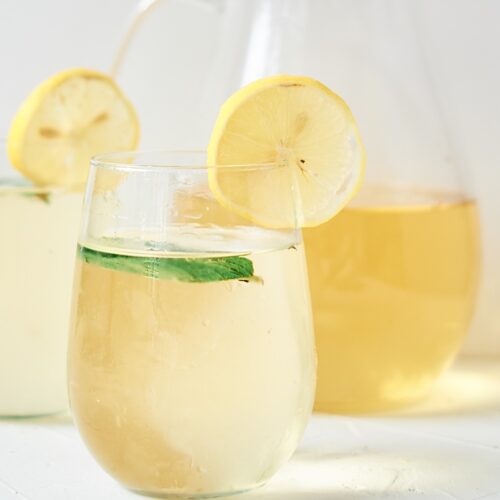
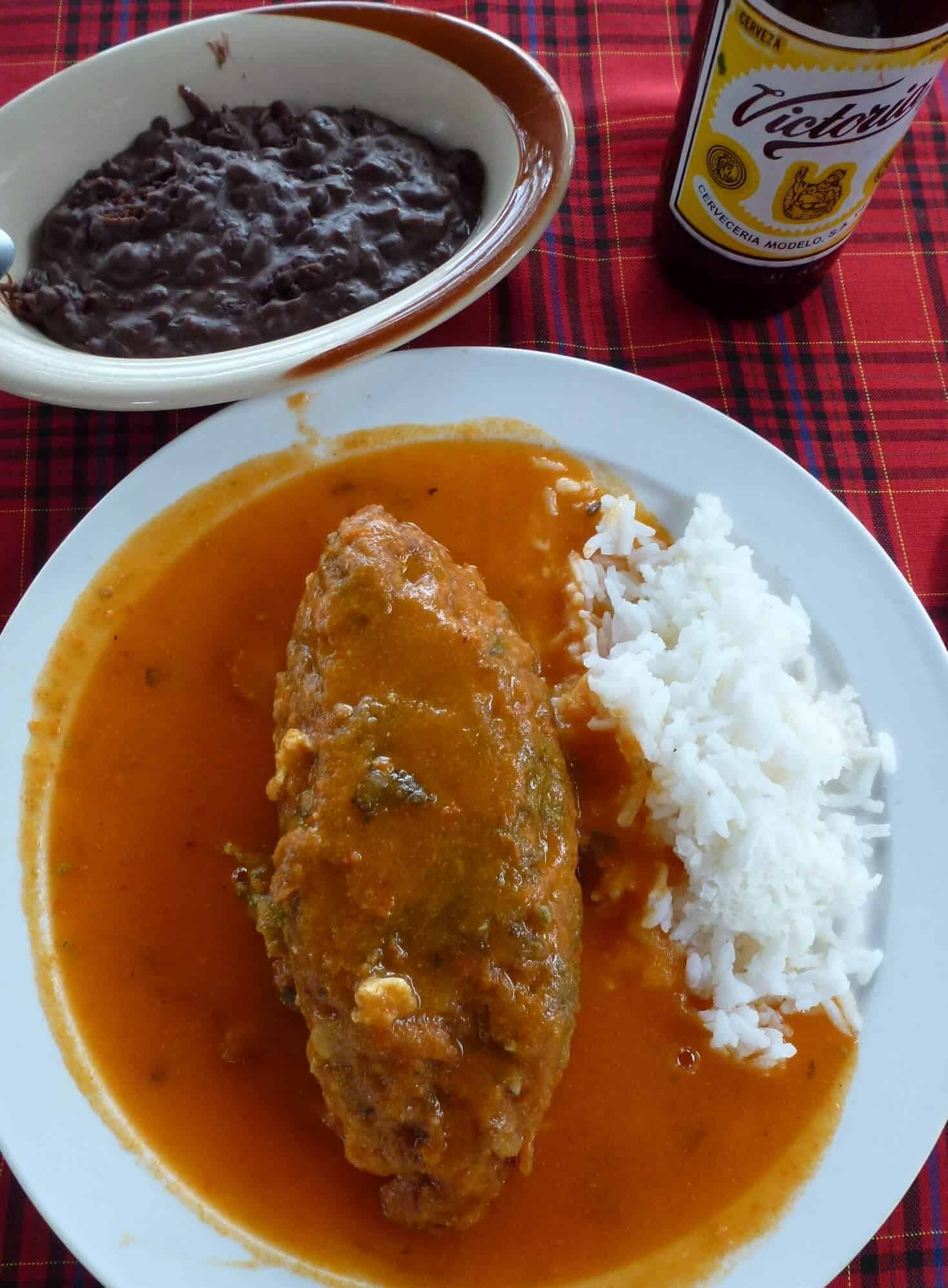
 Black Beans and Rice (Guatemalan Arroz Negro)
Black Beans and Rice (Guatemalan Arroz Negro)
Swinging Fender Saddle
I Love This Recipe. Simple, Quick, Easy, And Delicious. Thanx For Sharing This.
Stoney Lawson
Excellent and light. Bravo !
Sanna Bhavsar
What a refreshing salad recipe!
Doreen Pendgracs
Thx for the terrific recipe and article about purslane. I’d not previously heard of it before, but have grown portulaca in my flower beds. I’m sure I’d love that salad. Thx for sharing!
Leslie
What a delight to know this! I love the flavor cominations you used in this recipe as well!
Natalie
Such an interesting and delicious looking salad. Love the flavors and ingredients. It’s perfect for summer. Thanks for sharing the story and the recipe.
Jen Talley
That’s so cool that you can find greens growing wild that you can eat! The salad looks great!
Michele Peterson
Yes, it’s pretty amazing. Now I’m on the hunt to find some purslane in our neighbourhood 🙂
Melissa
Thanks for the recipe! This was perfect for lunch yesterday!
Raquel
A perfect summer salad recipe! Thank you!
Marina
What an amazing nutritious salad, love to add pomegranate to a salad it always gives such a unique colour and the juicy berries create a blast in your pallet. Thank u for sharing
Michele Peterson
So true! A handful of pomegranate definitely adds a boost of colour and nutrients!
Lathiya
The salad looks yum and healthy.
Chef Dennis
That salad looks OMG delicious! You know I’ve never heard of Purslane and now I can’t wait to try it.
Emily Flint
I love unique edible greens but I had never heard of purslane before. Thanks for the lesson and the yummy recipe!
Laura
This is such a fun combination of ingredients. Love it.
Sue
What a delightful surprise! I have definitely always considered this a weed!
Michele Peterson
Me too! Now I’m on the lookout for purslane whenever I’m out for a walk!